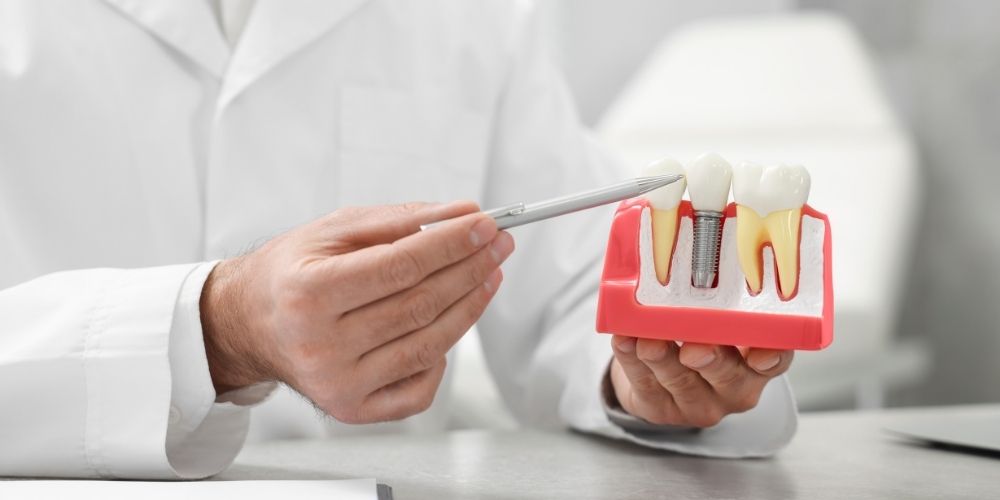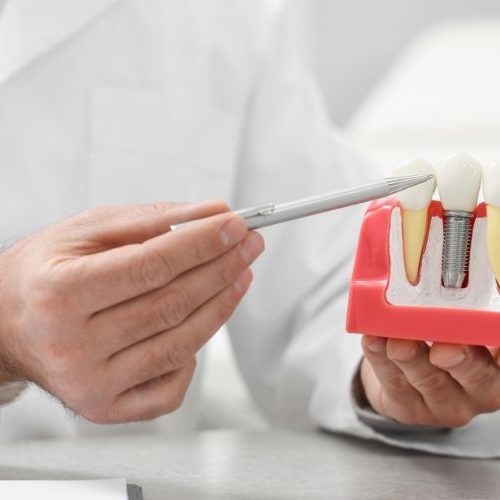بيت » Latest Developments in Dental Implant Technology:


ال latest dental implant technology has experienced major improvements since its invention. The durable and lasting material of dental implants Turkey has gained broad acceptance. As a result, they are frequently used as an alternative restorative treatment to conventional dentures and bridges. The resemblance of dental implants to natural teeth, as well as their resilience over time, directly influences the increase in the prevalence of the treatment and improvements in oral health. Dental implants Turkey are commonly composed of titanium or any other biocompatible material that easily fuses with the bone while also exhibiting a low percentage of immune response. Once they are surgically implanted into the jawbone, these prostheses act as an artificial root for holding teeth, bridges, and dentures in place. Likewise, the screw that connects the abutment to the titanium new implant techniques is made up of precious or semiprecious metals, including gold, zirconia, and titanium that have bioactive calcium materials. The abutment supports and retains the prosthesis on the implant abutment.
Immediate-loading dentures, which are used for immediate restoration, have a positive impact on oral rehabilitation before and after implant surgery. Innovations in dental implants have enhanced patients’ oral health, facial aesthetics, and chewing performance, all of which play a role in their wide acceptability compared to their regular counterparts, dentures and bridges. A method for treating multiple edentulous individuals involves using four to eight of these advanced dental implants as support for a fixed denture. An implant-retained prosthesis basically requires two specialists to perform such treatment separately, specifically an oral and maxillofacial surgeon and a prosthodontist. Dental implants are associated with a worse outcome in terms of peri-implant soft tissue aesthetics. In addition, these issues result in pain, which adversely impacts the patient’s overall quality of life. Thus, to prevent future consequences and to develop a treatment strategy, comprehensive research and up-to-date assessment findings are critical.
ال latest dental implant technology has evolved over the years and has become an aid for prosthetic rehabilitations. The properties of materials used in their manufacture and their surface properties have changed. At the same time, new techniques have been developed to improve the design, such as surface morphology and geometry. The chance of success of implant-supported restorations has increased by minimizing the complications during the placement and healing periods of the innovations in dental implants through the advancement of surgical techniques. Computer-aided surgery in 3D technology, guided bone regeneration, and bone splitting are among these techniques. Highly advanced devices have been developed, and successful results based on computed software studies have been obtained. These studies have shown that in addition to highly technical digital measurement techniques, the required computer programs and materials can also be shaped to the desired surface and morphology.
Technological developments brought a new perspective to new implant techniques treatment. Developments in biology and genetics were conducted with innovative advances. Developing a combination of advanced dental implants based on biologic orientation and stem cell technique is the most interesting area. Over the years, dental implants Turkey have also become popular, and the surgical technique used for placing implants has undergone a shift to minimally invasive surgery. The use of short innovations in dental implants will increase in the future because the number of patients with chronic diseases increases every year. Research was started on osseointegration. Biomechanical properties are important in long-term research. Since rapid developments will occur in the next ten years, the studies conducted today are expected to be significantly different than in the next twenty years.
Turkey has become a gem in dental tourism over the past twenty years. It is home to more than two hundred dental schools, which ensure the continuous supply of young dentists. Over the past decade, a large number of national and international clinics have been established in the main cities of Turkey. Dental practitioners who have completed a one-year implantology and oral surgical training course in their home countries may also receive further specialized training in Turkey. All dental implants Turkey clinics are equipped with scanners, such as computer tomography, and they print the 3D model to better plan the implant. While the majority of patients are from Middle Eastern and Balkan countries, patients from all over the world, mainly from Europe, come to Turkey to have advanced dental implants placed at a starting price. Some of these clinics have received various certifications.
Thanks to an advanced digital infrastructure and an atmosphere of innovation that attracts dental practitioners and researchers, Turkey was also home to an annual meeting held in Istanbul. The meeting was yet another successful installment of an educational program that brought together veterans from implantology and related fields to provide lectures, present information, and share their insights and knowledge. The Turkish Dental Association and Turkish Dental Chamber have been working for over a decade to create a secure and professional working environment for dental implants Turkey health professionals that will help to improve the practice of dental medicine in Turkey. They follow international criteria, regulations, and systems. The team, the Turkish Dental Association, and the Turkish Dental Chamber have implemented and will implement various educational, informational, and training programs. Turkey’s status as a global center for dental training and education puts it in a unique position as a pioneer in the field of implantology and digital dentistry. The country’s strategic location and the kindness of Turkish culture ensure that this expertise is available to those traveling on a dental tourism odyssey.
Personality: Mr. M.V., 54 years old – daily life executive assistant Analysis of the case: The patient has a high aesthetic-social requirement due to his work, face-to-face continuously. There is loss of the lower incisors, and the remaining teeth are due to be removed as a result of bone resorption due to advanced periodontal disease. Therefore, a limiting upper and lower total prosthesis was planned to be made. No bone deficient conditions were encountered to apply the advanced dental implants. With the 3D printing method, temporary supporting prostheses were prepared and the patient lived happily for 3 months without any obstacles. At the end of this period, 4 months after the new implant techniques surgery, the final prostheses were delivered. Mr. H.T., 44 years old – feeding operator of factories Analysis of the case: The patient had multiple cavities, advanced periodontal disease, and aesthetic concerns about tooth asymmetry. All the teeth were extracted and a 3-month period was spent to treat the inflammation and to recover the surgically extracted sites. At the end of this period, as a result of tomography taken with an intraoral scanner, two 3D printed zirconia-supported partial prostheses, with even distribution of the front and back teeth and adequate vertical dimension, were drawn on the monitor and presented to the patient after the approval, and the prostheses were made. Working steps did not change and cross-check over the patient’s suture was invoicing the use as muscle. Of course, a 3-ft axis of pathology had to be determined because the patient had a flat bite plane. Different surgical procedures had to be performed and new joint parameters had to be created that would move the point where it entered the socket more anteriorly. With this method, the mastication muscles were moved far away from the border of the denture and the aesthetic result was much better. The patient was very satisfied both medically and personally.